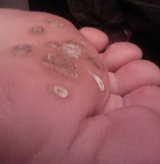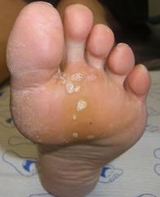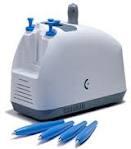
26850 Providence Parkway Suite #300, Novi, MI, 48374
Phone: 248.348.4200
Fax: 248.380.6457

Gavini Pediatric & ADHD Clinics26850 Providence Parkway, Suite 300, Novi, MI 48374 :: 248.348.4200www.ADHDclinic.com :: www.YourKidsDoctor.com |
|
|---|---|
|
Plantar WartsWhat is a Plantar WartA wart is a small growth on the skin that develops when the skin is infected by a virus. Warts can develop anywhere on the foot, but typically they appear on the bottom (plantar side) of the foot. A plantar wart is a small lesion that appears on the sole of the foot and typically resembles a cauliflower, with tiny black dots under the skin in the center. Pinpoint bleeding may occur when these are scratched, and they may be painful when standing or walking. ‘Plantar wart treatment is generally recommended to lessen symptoms (which may include pain), decrease duration, and reduce transmission. |
|
Signs and SymptomsThe symptoms of a plantar wart may include:
|
|
Causes
|
|
Cryo Pen System TreatmentThe treatment depends on the type of wart. The common treatments are abrasion, cautery with acids and cryo-treatment.Skin abrasion is the first step in treating molluscom contagiosum. Skin abrasion uses a small abrasive device that easily and painlessly removes the first layer of skin to prep the lesion for treatment. Trichloracetic acid (TCA): For molluscom contagiosum TCA is an effective treatment because it destroys the proteins in the viral cells. A petroleum jelly will be applied around the healthy skin area of the wart to protect the intact skin. TCA is then applied and is a clear, watery liquid that is painted on the warts with an applicator. The warts will turn a whitish color and shrink. CyroPen: This is the state-of-the-art treatment modality that freezes the wart to -130F and kills the virus. The rods in the Helium cooled devise come in various diameters to suit various wart sizes. The Cryopen rod is applied to the wart 10 seconds to 3 minutes, depending on the thickness and toughness of the lesion. The freezing will cause a blister which may last for 3 to 5 days before it scabs. The scab will fall off within 2 weeks. This skin area will remain light colored for a few months and would completely disappear, leaving no scars. he Cryopen is the best treatment for the molluscum contagiosum warts with minimal discomfort and no scarring. CryoPen advantages are:
|
|


